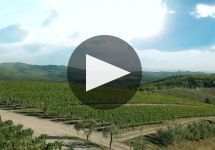Frescobaldi Tenuta Perano Chianti Classico 2019
-
James
Suckling -
Wine
Enthusiast -
Wine
Spectator



Product Details
Your Rating
Somm Note
Winemaker Notes
Bright ruby-red color. The guiding aromas are quite fruity, with a distinctive sour cherry fragrance. Red and black berries are accompanied by floral notes such as sweet violet and a subtle, delicate spice. Finally, the profound elegance is highlighted by a splendid freshness.
Ideal with meat ragu and all red meats. The wine is especially well-suited with aged cheeses.
Professional Ratings
-
James Suckling
A full-bodied red with plum and walnut aromas and flavors. Some meat and spice, too. Firm and silky. Flavorful. Real Chianti Classico
-
Wine Enthusiast
Graphite, leather, blue flower and wild berry aromas waft out of the glass. Elegant and delicious, the fresh, supple palate doles out ripe black plum, cassis, mint and licorice alongside fine-grained tannins.
Editors' Choice -
Wine Spectator
From the celebrated Frescobaldi family, the Tenuta Perano 2019 Chianti Classico is Sangiovese mixed with other complementary varieties. This easy-drinking wine offers tart cherry, earth, tar and crushed stone. This mid-weight Tuscan red would pair with a plate of ricotta-filled ravioli or another hearty pasta dish.
Other Vintages
2021-
Wine
Spectator - Decanter
- Vinous
-
James
Suckling - Decanter
-
Robert
Parker -
Jeb
Dunnuck
-
Wine
Spectator
-
James
Suckling -
Robert
Parker -
Wine
Enthusiast
- Decanter
-
James
Suckling -
Wine
Spectator -
Wine
Enthusiast
-
James
Suckling -
Wine
Spectator -
Robert
Parker -
Tasting
Panel

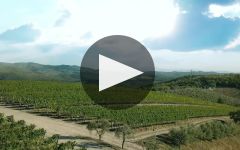
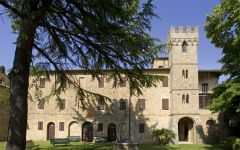
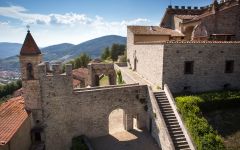
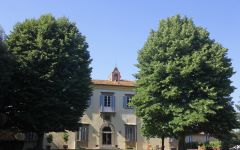
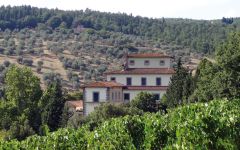
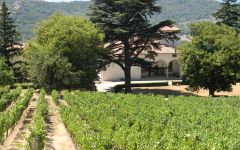

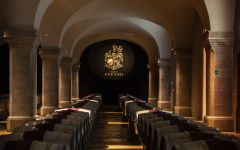

Frescobaldi’s story is strictly connected with the history of Tuscany. At the high point of medieval Florence, the Frescobaldis spread their influence as bankers, becoming patrons of major works in Florence, such as Santa Trinita bridge and the Basilica of Santo Spirito.
Frescobaldi embodies the essence of Tuscany, its extraordinary vocation for viticulture and the diversity of its territories.
Frescobaldi’s uniqueness stems precisely from the representation of Toscana diversity, from its estates and from wines which express a kaleidoscope of aromas and sensations, springing from the characteristics of each individual terroir. The Estates are positioned in prime areas of Tuscany and each tells its own story, made up of nature, terroir and people.
From Tenuta Castiglioni, where the family’s 700 years of wine-growing history began, to CastelGiocondo on the Montalcino hills, to the timeless Castello Nipozzano. From the hidden gem of Castello Pomino, up to Tenuta Ammiraglia’s new horizons overlooking the sea, to Tenuta Perano a natural amphitheater in the heart of Chianti Classico, ending with Remole, that expresses all the character of Tuscany.
Behind every Frescobaldi wine lies the passion of agronomists and oenologists, who know their vineyards and terroirs down to the finest detail. Their art, creating quality wines, requires the iron rule of respect. Respect for tradition, which guide them, even in the midst of innovation or avant-garde solutions. Respect fort Tuscany, the living land, to be cultivated in harmony and serenity. Respect for each individual terroir, borne of a unique combination of soil, altitude and microclimate, each giving us a wine with its own matchless personality.

Among Italy's elite red grape varieties, Sangiovese has the perfect intersection of bright red fruit and savory earthiness and is responsible for the best red wines of Tuscany. While it is best known as the chief component of Chianti, it is also the main grape in Vino Nobile di Montepulciano and reaches the height of its power and intensity in the complex, long-lived Brunello di Montalcino. Somm Secret—Sangiovese doubles under the alias, Nielluccio, on the French island of Corsica where it produces distinctly floral and refreshing reds and rosés.

One of the first wine regions anywhere to be officially recognized and delimited, Chianti Classico is today what was originally defined simply as Chianti. Already identified by the early 18th century as a superior zone, the official name of Chianti was proclaimed upon the area surrounding the townships of Castellina, Radda and Gaiole, just north of Siena, by Cosimo III, Grand Duke of Tuscany in an official decree in 1716.
However, by the 1930s the Italian government had appended this historic zone with additonal land in order to capitalize on the Chianti name. It wasn’t until 1996 that Chianti Classico became autonomous once again when the government granted a separate DOCG (Denominazione di Origine Controllata e Garantita) to its borders. Ever since, Chianti Classico considers itself no longer a subzone of Chianti.
Many Classicos are today made of 100% Sangiovese but can include up to 20% of other approved varieties grown within the Classico borders. The best Classicos will have a bright acidity, supple tannins and be full-bodied with plenty of ripe fruit (plums, black cherry, blackberry). Also common among the best Classicos are expressive notes of cedar, dried herbs, fennel, balsamic or tobacco.
